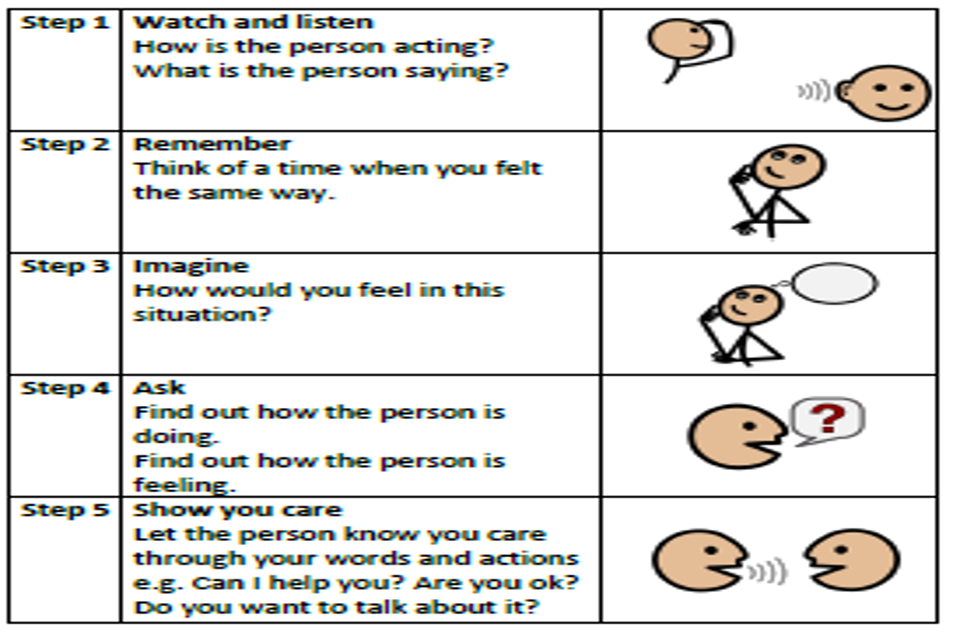Restorative Practice
Our ultimate goal in school is to engage in a restorative practice approach – what we mean by this is Mark Finnis’ definition:
“A way of being, an underpinning ethos, which enables us to build and maintain healthy relationships. It provides a strong framework within which we can promote a whole school ethos founded on the importance of relationships. This is includes a range of approaches to managing conflict and tensions in a way that repairs harm and mends relationships if and when those relationships break down.”
This should not be confused with Restorative Justice or Restorative Conversations (which are a part of restorative practice) – an approach specifically used when conflict and repairing harm.
Restorative Approaches value the perspectives of everyone involved in an incident and have a long history in Native American cultures, where talking circles were used to overcome issues within the community.
Allowing all parties to share their views has been used within the criminal justice system and is now creating successful impact within school communities.
It is a way of working that recognises the harm that has been caused, and it aims to repair relationships. The repair takes place through restorative actions, such as repairing harm or damaged property, taking the time to develop an understanding of those who have been hurt and working together to identify new ways to interact.
Restorative approaches allow adults to model emotional literacy and develop the student’s empathy, so that their drive to behave in a negative way is challenged not by sanctions, but by the impact the behaviour has on others in society. It is not about using fear to force a person to change behaviour or make amends, but instead using structured conversation to make them accountable for their actions & helps to identify how a resolution can be found.
Restorative Vs Authoritarian Approaches
This table summarises the key differences between restorative vs authoritiarian approaches:

What’s Being Restored?
This depends on the context and on the needs of those involved. What is being restored is often something between the people involved such as:
- Effective communication;
- Relationship, and even friendship;
- Empathy and understanding for the other’s perspective;
- Respect;
- Understanding the impact of one’s own behaviour on others;
- Reparation for material loss or damage.
However, something may also be restored within an individual – for example:
- A sense of security;
- Self-confidence;
- Self-respect;
- Dignity.
Overall, the process often results in the restoration of someone’s sense of belonging to a community (e.g. class, school, peer group or family).
Restorative Conversations
Ideally, there should be no more than 5 questions as part of a restorative conversation, language should be child friendly, using visuals can help learners to understand / communicate and sometimes allowing children to draw or write how they feel is a useful way to engage those who are ‘reluctant’.
Scripts are a useful way to begin a restorative approach and many schools have mini scripts on lanyards to support conversations, but the ultimate aim is for restorative language to become embedded in the culture of the school and everyday practice/communication.
Mark Finnis in his book Restorative Practice prefers the term ‘structures’ , as it allows more flexibility based on the individual conversations.
Here are some further examples of questions:
- *What happened?
- *What were you thinking at the time?
- *What have you thought since?
- *How did this make people feel?
- *Who has been affected?
- *How have they been affected?
- *What should we do to put things right?
- *How can we do things differently in the future?
We should carefully consider the language we use:

Stop-Look-Listen
A restorative approach links to building self-regulation strategies.
The basic premise is that following an incident:

IMAGE: UK Youth
- STOP (pause to think),
- LOOK at the situation and what’s happened
- LISTEN to each other (ensuring all parties are heard, which will help us to understand what has occurred).
Slowing the pace can take the heat our of the incident. It can especially work well when you are in the middle of a lesson e.g A learner enters the classroom after break and is shouting about an incident which has occurred in the playground. By maintaining calm, you can explain: “I can see you’re not happy at them moment. Stop there whilst I get everyone organised, then I’ll listen to your issue”.
Some learners initially may struggle with this approach as they might be used to being reprimanded or sent away without being listened to or there may be some who have internalised the idea that they are “bad” simply because people haven’t taken the time to stop, look at the reason why they reacted and listen to their perspective.
Developing Empathy
Empathy is a key element in a restorative approach – seeing a situation from another’s perspective. Brene Brown identifies 4 important steps when it comes to showing empathy:
- Perspective taking or putting yourself in someone else’s shoes.
- Staying out of judgement & listening
- Recognising an emotion in another person that you have maybe never felt before yourself.
- Communicating that you recognise that emotion.
Education Scotland’s Connected & Compassionate Classroom Resource features a helpful activity to help learners develop empathy. There are a number of different scenarios which can be discussed alonside the structure below:


